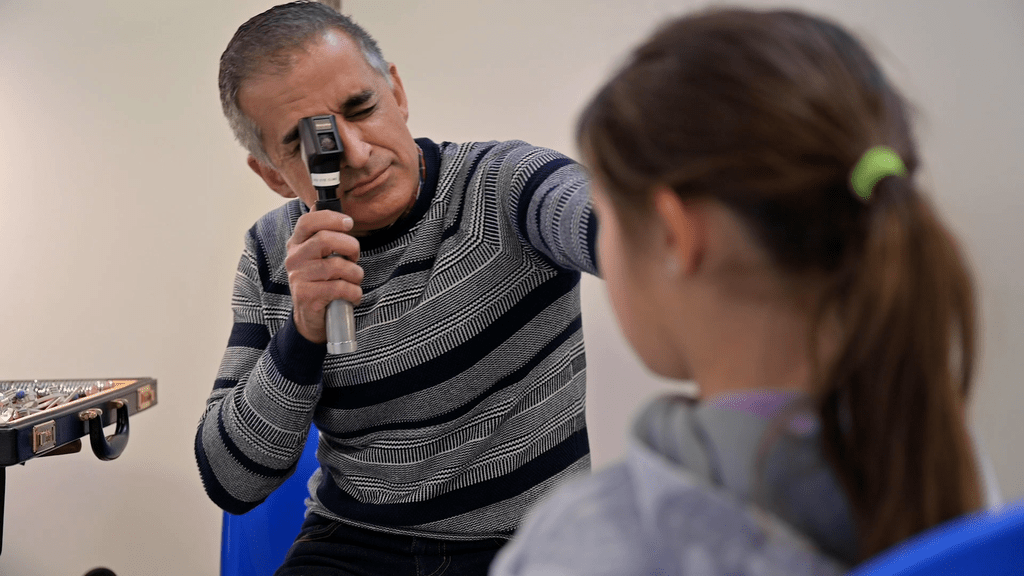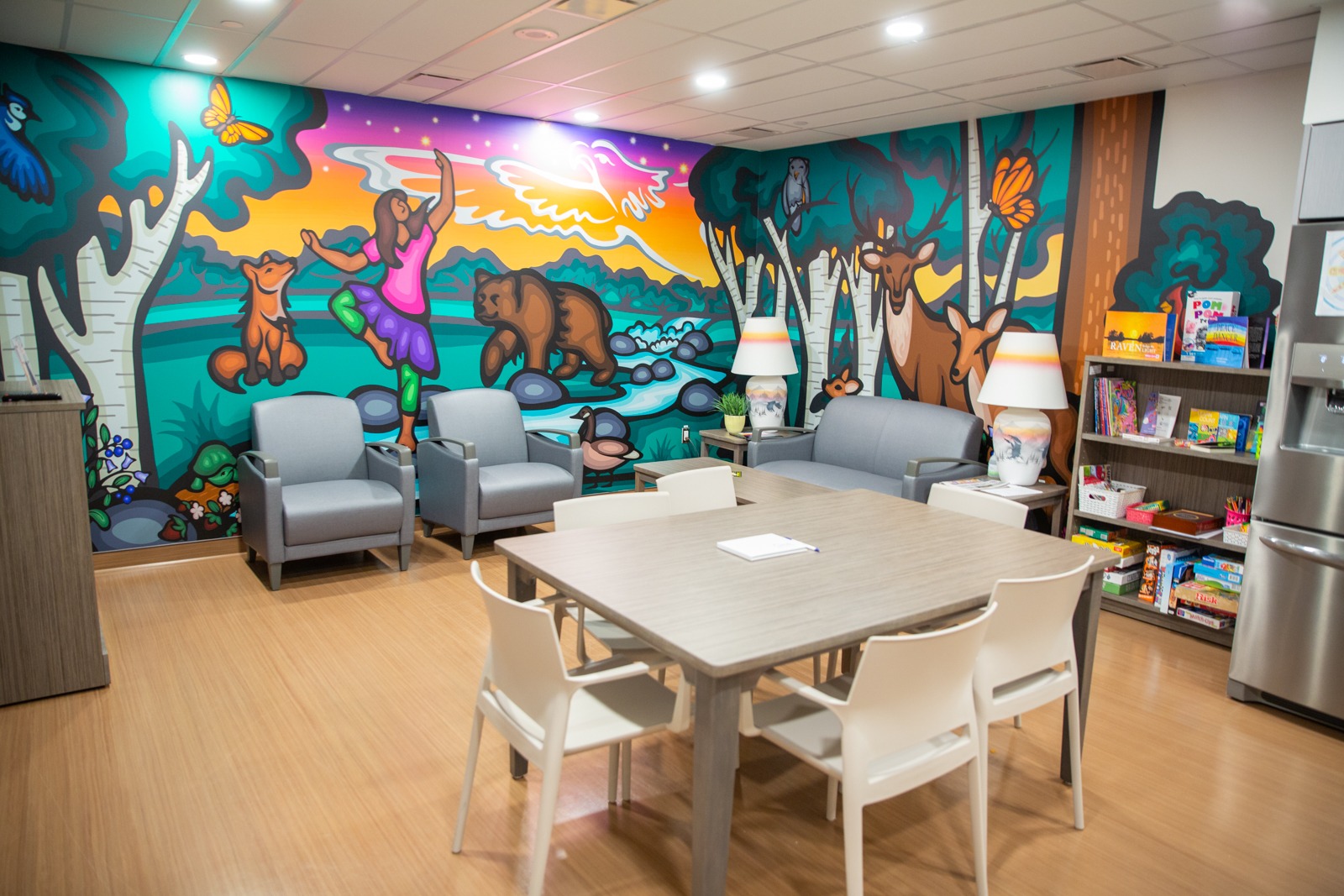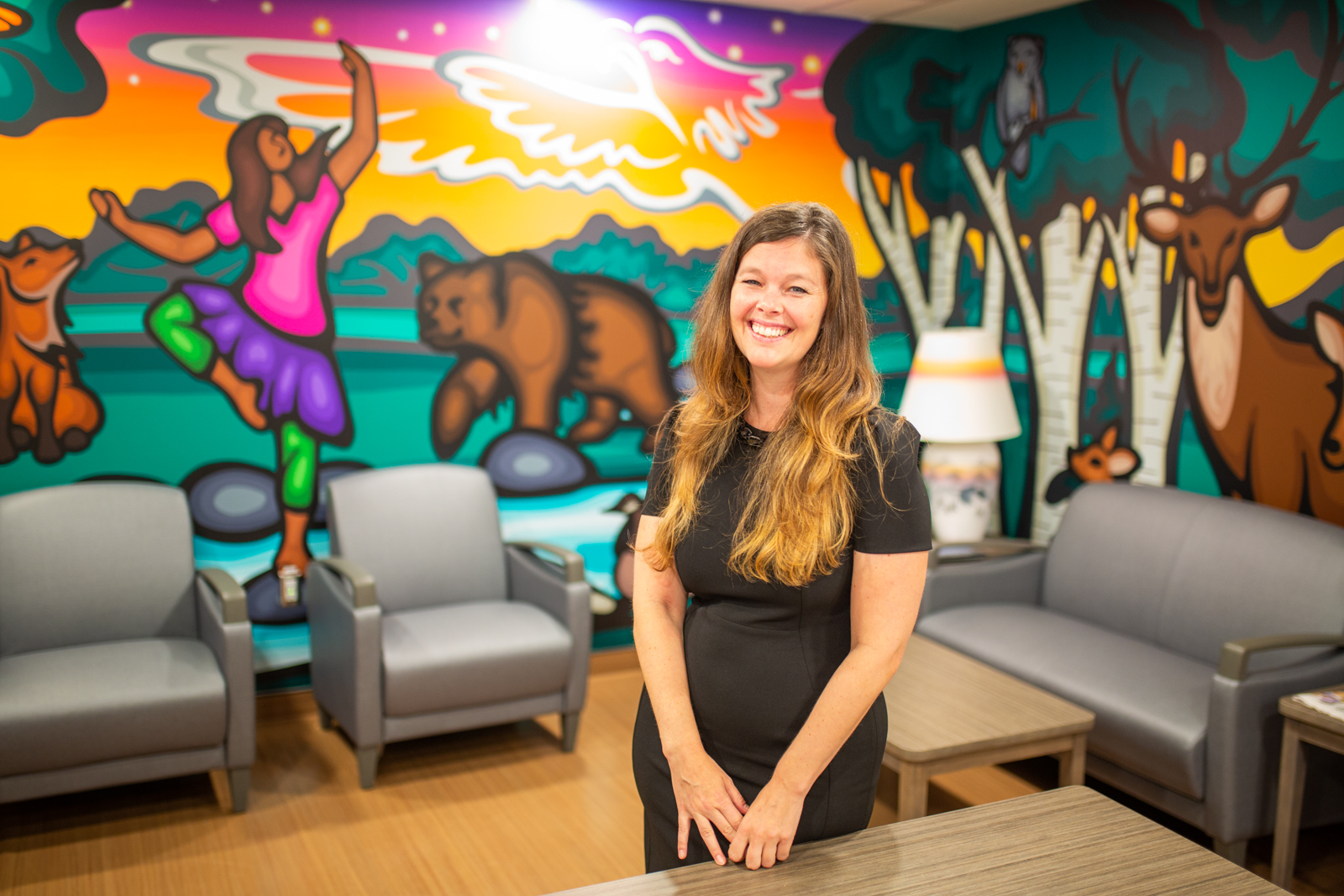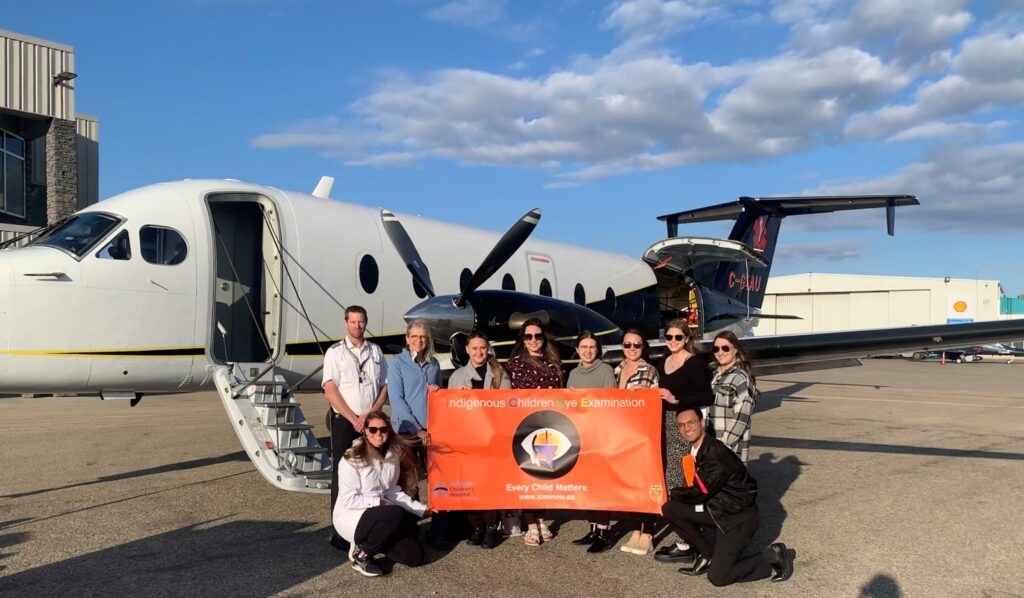
Indigenous Children Eye Exam project expands to Saskatchewan
The Hamilton-based Indigenous Children Eye Exam (ICEE) project has expanded to Saskatchewan. Inspired by a Hamilton Health Sciences (HHS) eye doctor, the original program is offered in remote northern Ontario communities served by the Weeneebayko Area Health Authority.
The project is the vision of Dr. Kourosh Sabri, a pediatric ophthalmologist at HHS McMaster Children’s Hospital (MCH). Sabri and a small team of eye-care specialists from the Hamilton area started visiting remote northern Ontario communities several years ago to provide vision screening and eye exams to Indigenous children and teens under the age of 16.
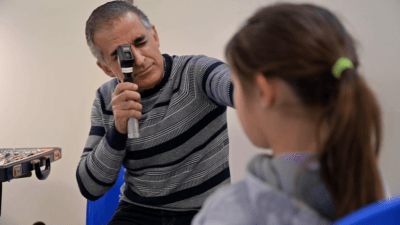
Dr. Kourosh Sabri, a pediatric ophthalmologist at Hamilton Health Sciences McMaster Children’s Hospital, came up with the concept for the Indigenous Children Eye Exam project. Photo courtesy of the ICEE project.
“Good vision is vital to a child’s healthy development and success in school,” says Sabri. Yet only 15 to 16 per cent of Canadian children under the age of six have had an eye exam. And for Indigenous children and youth in isolated communities it’s especially challenging.”
This small team quickly learned that the need was far greater than they could provide, particularly during the pandemic, so Sabri came up with the concept for the ICEE project. It includes in-person visits by volunteer teams of optometrists, opticians and technicians from Hamilton, and now Saskatoon, providing vision screening and eye exams. These teams also train local, northern health-care providers such as nurses on how to provide vision screening and support weekly telemedicine clinics.
The ICEE project is funded by the Jordan’s Principle branch of the Federal Ministry of Indigenous Services Canada.
Virtual care
Virtual eye exams link children and youth in need of follow-up care to Dr. Yasmin Jindani, the project’s national coordinator and lead optometrist. Jindani works in a private practice and is part of McMaster University’s Pediatric Eye Research Group along with Sabri.
Virtual care is provided through a website that houses eye exam software and includes virtual exam rooms. McMaster University developed the innovative software for these remote eye exams.
Over 60 per cent of kids tested needed glasses
In Ontario, the ICEE project is available to more than six thousand children and youth in the James Bay and Hudson Bay communities of Weenusk First Nation, Fort Albany First Nation, Kashechewan First Nation, Attawapiskat First Nation, Moose Cree First Nation, and the Town of Moosonee.
Through further expansion, it now provides care in northern Saskatchewan. In May, the ICEE team visited the Métis community of Ile-a-la-Crosse, providing eye exams to 51 children and teens in one day. Thirty-one of these children, or just over 60 per cent, received prescription eyeglasses.
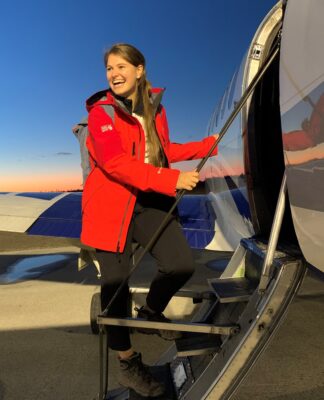
Hamilton Health Sciences child life specialist Brittany Lane boards a plane for the Indigenous Children Eye Exam progject. Lane is trained as an eye technician with the project.
The ICEE project’s overall goal is to develop a self-sustaining model of care and expand to isolated northern communities across Canada.
“This model provides a template for self-sustained, evidence-based eye-care delivery in many other isolated communities,” says Sabri, who reached out to health authorities and community leaders from other provinces and territories to gage interest.
Ile-a-la-Crosse was the first to welcome the opportunity. “The closest optometrist to Ile-a-la-Crosse takes several hours to reach by car, so most children don’t receive eye exams,” says Sabri.
The Ile-a-la-Crosse visit was attended by MCH child life specialist Brittany Lane, who is trained as an eye technician with the project, and Dundas optometrist Dr. Betty Johnson. Both have experience volunteering with the project in Ontario.
Healthy development
Lane and Johnson boarded a charter plane in Hamilton, bringing along all the equipment needed for the visit. Their first stop was Saskatoon, where they picked up a six-member team of new volunteers. These optometrists, opticians and technicians were recruited specifically for the Ile-a-la-Crosse visit. From Saskatoon they continued to Ile-a-la-Crosse where there were enough patients for a 10 hour day of exams.
“Our in-person exams started at nine o’clock on Saturday morning and we worked steadily until seven at night,” says Lane, who, along with Johnson, showed the Saskatoon team members how to operate clinics.
The goal is to sustain and grow the ICEE project in northern Saskatchewan, with support from Saskatoon eye care professionals who are excited to continue with visits, says Lane.
Some of Lane’s strongest memories of volunteering with this project include providing eye care for teens in James Bay who had lived with poor vision for much of their lives.
“We tested teenagers who couldn’t see the largest letters on an eye exam chart,” says Lane. “It broke my heart because their vision could have had an impact on other areas of life such as school and learning.”
An eye on expansion
Sabri and the team look forward to recruiting more eye-care professionals from across Canada for the project.
“Having the Saskatchewan eye-care team for the Ile-a-la-Crosse visit was vital to the project’s sustainability in that community,” says Sabri, adding, “We have a blueprint for how to organize trips in other provinces and territories. Everything is in place to successfully deliver this project Canada-wide to interested Indigenous communities. This model also has the potential to be delivered internationally.”

